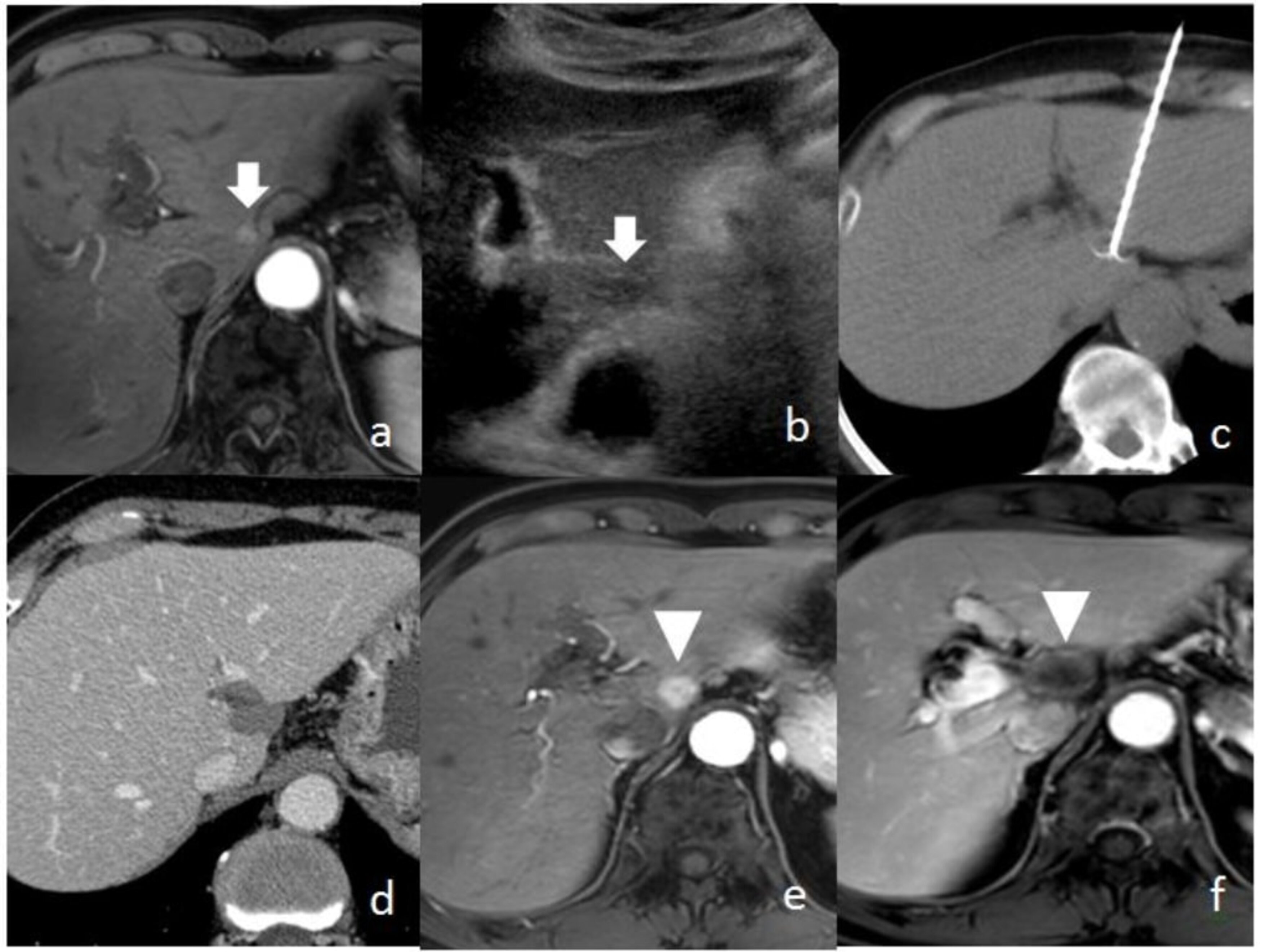Percutaneous Radiofrequency Ablation Treatment of Hepatocellular Carcinoma in Caudate Lobe Using Expandable Electrodes
DOI:
https://doi.org/10.33192/Smj.2021.70Keywords:
Caudate lobe, Expandable electrodes, Hepatocellular carcinoma, Radiofrequency ablationAbstract
Objective: To evaluate the outcome of radiofrequency (RF) ablation using expandable electrodes in the treatment of hepatocellular carcinoma (HCC) located in the caudate lobe.
Materials and Methods: Between January 2011 and April 2017, 29 consecutive patients with HCC at the caudate lobe were treated with RF ablation using expandable electrodes. The electrodes were placed on the targeted tumor under combined ultrasound and computed tomography (CT) guidance for each tumor in all the patients. Out of the 29 cases, 19 (65.5%) were accessed via the left hepatic lobe. The technical success, primary efficacy, local tumor progression, secondary efficacy, overall survival, and complications were evaluated. Univariate analysis was performed of the various prognostic factors for technical success, primary efficacy, and local tumor progression.
Results: The technical success rate was 86.2%, primary efficacy was 89.7%, and secondary efficacy was 82.8%. The local tumor progression (LTP) rate was 12.3% at one year and 31.5% at two years. The median time of LTP was 6.9 months. The overall survival rate was 85.8% at one year and 57.1% at two years. Ten patients died during the follow-up period (mean 22.5 months; with a range of 3.6–53.2 months). A minor complication of asymptomatic biloma was found in one patient (3.5%). Small-sized tumors (≤2 cm) and Spiegel’s lobe location had significantly better treatment outcomes (p = 0.007 and 0.045, respectively).
Conclusion: Radiofrequency ablation using expandable electrodes is feasible and safe in treating HCCs located in the caudate lobe, especially for small-sized tumors (≤2 cm).
References
2. Miyayama S, Yamashiro M, Hattori Y, et al. Angiographic evaluation of feeding arteries of hepatocellular carcinoma in the caudate lobe of the liver. Cardiovascular and Interventional Radiology 2011; 34:1244-1253.
3. Tanaka S, Shimada M, Shirabe K, et al. Surgical outcome of patients with hepatocellular carcinoma originating in the caudate lobe. American journal of surgery 2005; 190:451-5.
4. Jiang K, Zhang W, Su M, et al. Laparoscopic radiofrequency ablation of solitary small hepatocellular carcinoma in the caudate lobe. European Journal of Surgical Oncology 2013; 39:1236-42.
5. Seror O, Haddar D, N’Kontchou G, et al. Radiofrequency ablation for the treatment of liver tumors in the caudate lobe. J Vasc Interv Radiol. 2005; 16:981-90.
6. Yamakado K, Nakatsuka A, Akeboshi M, Takaki H, Takeda K. Percutaneous radiofrequency ablation for the treatment of liver neoplasms in the caudate lobe left of the vena cava: electrode placement through the left lobe of the liver under CT-fluoroscopic guidance. Cardiovascular and Interventional Radiology 2005; 28:638-640.
7. Nishigaki Y, Tomita E, Hayashi H, et al. Efficacy and safety of radiofrequency ablation for hepatocellular carcinoma in the caudate lobe of the liver. Hepatol Res. 2013; 43:467-74.
8. Kim HC, Chung JW, Jae HJ, et al. Caudate Lobe Hepatocellular Carcinoma Treated with Selective Chemoembolization. Radiology 2010; 257:278–87.
9. Fujimori M, Takaki H, Nakatsuka A, et al. Combination therapy of chemoembolization and radiofrequency ablation for the treatment of hepatocellular carcinoma in the caudate lobe. J Vasc Interv Radiol. 2012; 23:1622-8.
10. Hyun D, Cho SK, Shin SW, Rhim H, Koh KC, Paik SW. Treatment of Small Hepatocellular Carcinoma (≤2 cm) in the Caudate Lobe with Sequential Transcatheter Arterial Chemoembolization and Radiofrequency Ablation. Cardiovascular and interventional radiology 2016; 39:1015-22.
11. Sugimori K, Nozawa A, Morimoto M, et al. Extension of radiofrequency ablation of the liver by transcatheter arterial embolization with iodized oil and gelatin sponge: results in a pig model. J Vasc Interv Radiol. 2005; 16:849-56.
12. Liu Z, Gao F, Yang G, et al. Combination of radiofrequency ablation with transarterial chemoembolization for hepatocellular carcinoma: an up-to-date meta-analysis. Tumour Biol. 2014; 35:7407-13.
13. Lee MW, Kim YJ, Park SW, et al. Percutaneous radiofrequency ablation of small hepatocellular carcinoma invisible on both ultrasonography and unenhanced CT: a preliminary study of combined treatment with transarterial chemoembolisation. The British journal of radiology 2009; 82:908-15.
14. Ahmed M, Solbiati L, Brace CL,et al. Image-guided tumor ablation: standardization of terminology and reporting criteria--a 10-year update. Radiology 2014; 273:241-60.
15. Sacks D, McClenny TE, Cardella JF, Lewis CA. Society of Interventional Radiology clinical practice guidelines. J Vasc Interv Radiol. 2003; 14:199-202.

Published
How to Cite
Issue
Section
License
Authors who publish with this journal agree to the following conditions:
Copyright Transfer
In submitting a manuscript, the authors acknowledge that the work will become the copyrighted property of Siriraj Medical Journal upon publication.
License
Articles are licensed under a Creative Commons Attribution-NonCommercial-NoDerivatives 4.0 International License (CC BY-NC-ND 4.0). This license allows for the sharing of the work for non-commercial purposes with proper attribution to the authors and the journal. However, it does not permit modifications or the creation of derivative works.
Sharing and Access
Authors are encouraged to share their article on their personal or institutional websites and through other non-commercial platforms. Doing so can increase readership and citations.














